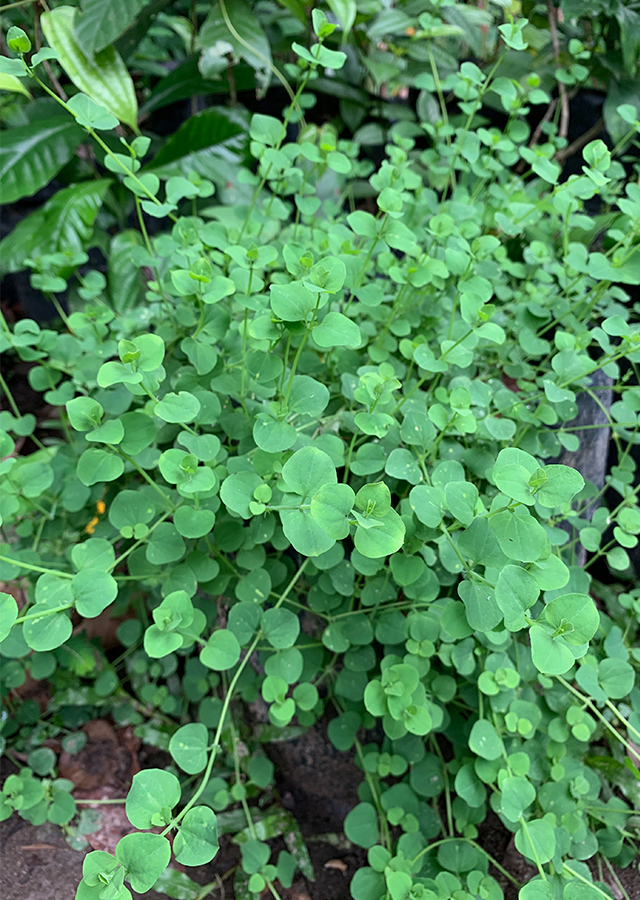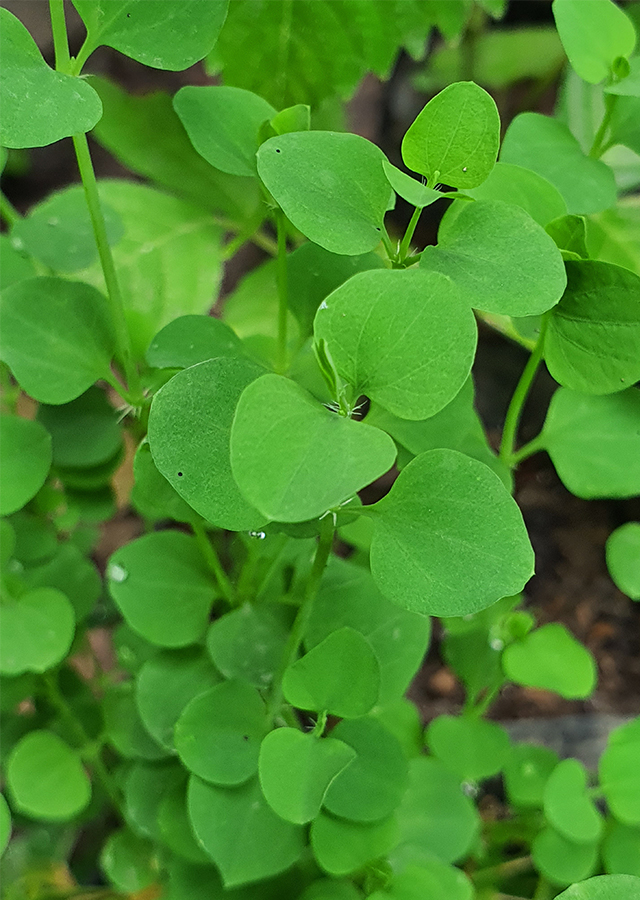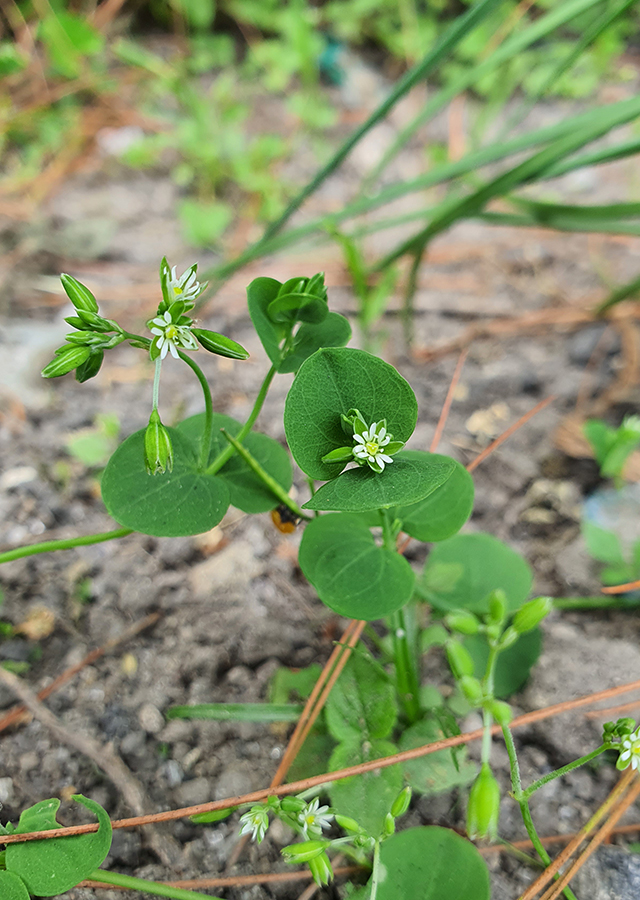Billygoat Weed
Drymaria cordata (L.) Willd. ex Schult.
Caryophyllaceae
Location in our garden
Shading Area



Synonym
Drymaria procumbens Rose
Drymaria sessilifolia Fiori
Holosteum cordatum L.
Habitus
Herbaceous. Creeping annual, or less commonly perennial herb, with height up to 1 m.
Part Used
The Whole Plant
Growing Requirements
Need Shade
Habitat
Riverbanks
Forest
Roadside
Grassland
Overview
Drymaria cordata, the largest weed of the Drymaria genus originating in tropical America, is now widely spread in the tropics and sub-tropics. It has been deliberately introduced to be used as fodder in tropical and subtropical regions of the world and to manage soil erosion in degraded areas and gardens. In North Sumatra, this plant is one of the ingredients used to make traditional Karonese oil.
Vernacular Names
Mouron blanc (French), Hierba del rayo (Spanish), Laijabori (India), Anatarika (Madagascar), Golondrina (Colombia), Bakalanga (Philippines), Heartleaf drymary (USA).
Agroecology
In moist tropical and subtropical areas, D cordata is an aggressive, shade tolerant, weed of gardens, cultivation, pasture and disturbed land. Growing along roadsides and seminatural regions such as river banks, ditches, secondary forests, and edges of forests can be found. In humid and shaded habitat, it grows best at low to middle elevations (from 10-2,000 m). It is tolerant of a wide variety of soil textures with a pH ranging from 6.1-7.8, including sandy, loam and clay soils, and seasonal water logging.
Morphology
- Roots - fibrous, shallow, mainly from the the base of the stem but also from the lower nodes where the soil moist.
- Stems - weak, trailing or ascending, usually extensively of the plant, smooth and slender sometimes hairy, with swollen nodes.
- Leaves - opposite pairs on slender 3-10 mm long petioles, round to heart-shape or oval with rounded basis, smooth margins are rounded or bluntly pointed tips, 5-25 mm long and wide, hairless, weakly three-nerved, and paler below.
- Flowers - axillary clusters (cymes), on slender, densely hairy, 5-15 mm long pedicels, consists of 5 narrow green sepals 2-4 mm long, and white petals.
- Fruits - papery capsule 2-3 mm across, splitting at maturity into 3 parts to release the 5-10 small reddish tuberculate flattenned seeds.
Cultivation
D. cordata can be propagated by seeds and rooting nodes.
Chemical Constituents
Alkaloids, poliphenol, saponins, cordatamine, tannins, glycosides, flavonoids, diterpenes, steroids, stigmasterol, triterpenes.
Traditional Medicinal Uses
- It is said that the sap was a febrifuge and a laxative. It has an aromatic pungency that makes it commonly used to treat respiratory chest illnesses, colds and bronchitis in many countries.
- The plant is vesicant, stomachic and diuretic. As a remedy for jaundice, colds, biliousness and malaria, an infusion of leaves or whole plant is used.
- The plant is a decoction component that is administered as a cerebral stimulant, especially in children.
- The plant is scalded and the stem is used for skin-trouble eye fumigation.
- The plant is applied to oedemas on the feet and to leprosy externally. It is used for cuts, sores, tumors and eruptions of yaws as a poultice.
Part Used
Reference Sources
- CABI. (No date). Invasive Species Compendium. Drymaria cordata (tropical chickweed) https://www.cabi.org>isc>datasheet>Drymaria cordata (tropical chickweed). 27-07-2020.
- Fern, Ken, (2019). Useful Tropical Plants Database. Drymaria cordata. http://tropical.theferns.info/viewtropical.php?id=Drymaria+cordata 27-07-2020.
- StuartXchange. (2017). Philippine MedicinalPlants. Bakalanga. http://stuartxchange.org/Bakalanga.html. 28-07-2020

